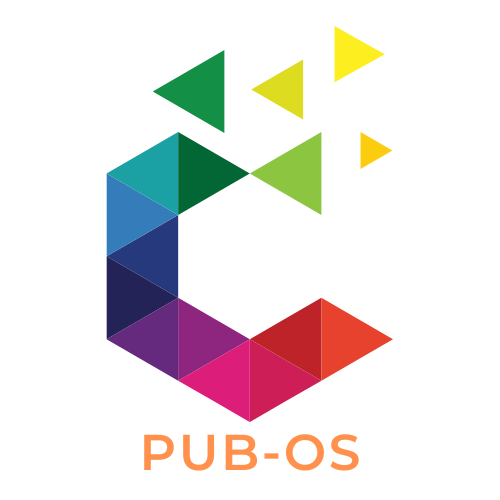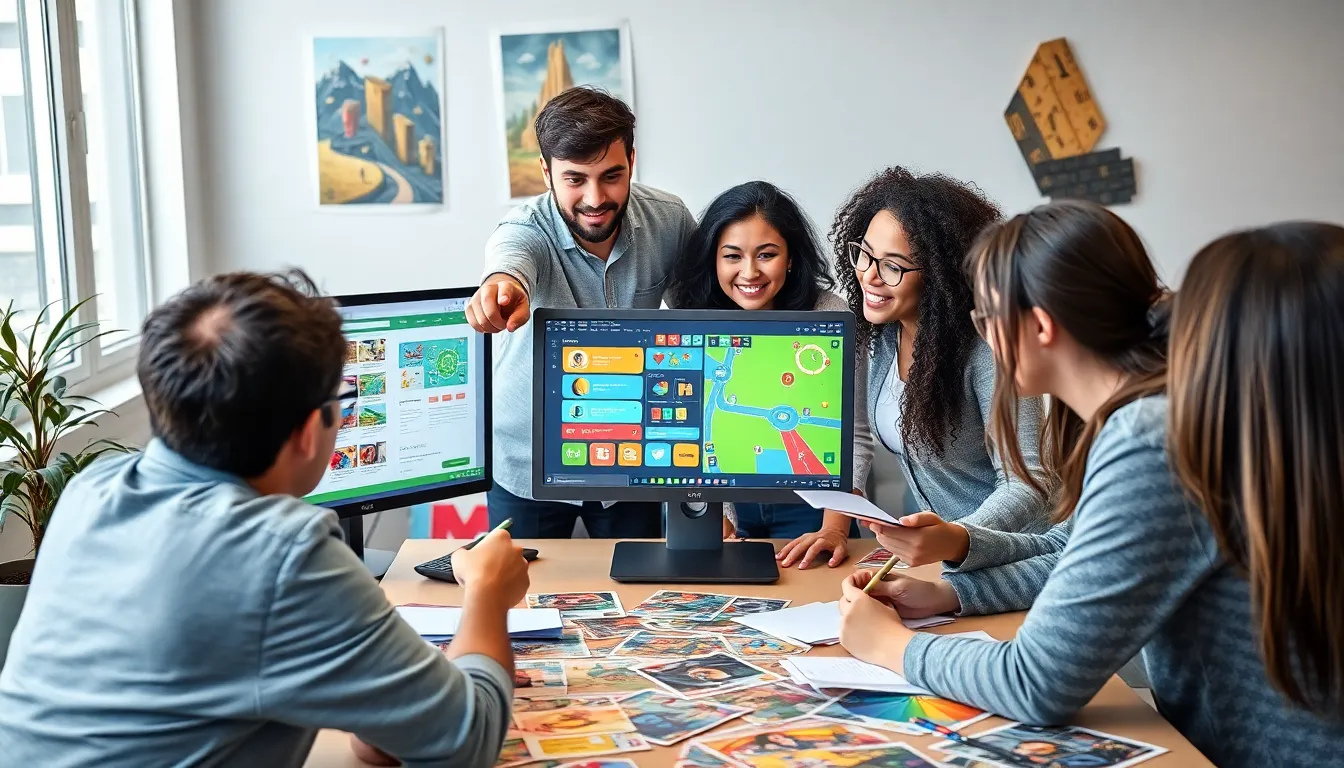In a world where creativity meets technology, no-code game development is revolutionizing the gaming industry. This innovative approach empowers aspiring game developers to bring their ideas to life without needing extensive programming skills. With user-friendly platforms and intuitive tools, anyone can create engaging games that capture players’ imaginations.
As the demand for unique and interactive gaming experiences continues to grow, no-code solutions are becoming increasingly popular. They allow creators to focus on storytelling and design rather than getting bogged down by complex coding languages. Whether you’re a hobbyist or looking to launch a new game, no-code game development offers an accessible pathway to unleash your creativity and share your vision with the world.
Overview of No-Code Game Development
No-code game development refers to creating games without traditional coding skills. This approach democratizes game development, allowing individuals to design, build, and launch games using intuitive interfaces. Platforms like Unity, GameSalad, and Construct empower creators, enabling them to drag and drop elements, set game logic, and customize visual layouts.
Advantages of no-code game development include:
- Accessibility: Individuals from non-technical backgrounds can participate.
- Speed: Rapid prototyping reduces the time from concept to playable game.
- Focus on Creativity: Developers concentrate on storytelling and design instead of technical details.
No-code platforms cater to various skill levels, making them valuable for both beginners and experienced developers. By lowering entry barriers, these tools foster an environment where diverse voices can contribute to the gaming landscape.
Statistics show the growing popularity of no-code platforms, evidenced by increased user adoption and successful game launches. The trend highlights the industry’s shift toward more inclusive and innovative game creation methods.
Benefits of No-Code Game Development

No-code game development offers significant advantages, making it easier for creators to design and launch games. This approach democratizes game development by removing technical barriers, leading to a more diverse range of creative expressions.
Accessibility for Beginners
Accessibility for beginners stands out as a primary advantage of no-code game development. Non-technical individuals can engage with platforms like Unity, GameSalad, and Construct without prior coding experience. These user-friendly interfaces allow users to manipulate visual elements and game mechanics intuitively. With clear tutorials and community support, beginners can quickly learn essential skills, fostering a sense of accomplishment as they create their games.
Speed of Development
Speed of development significantly increases with no-code game development platforms. These tools enable rapid prototyping, allowing creators to transform concepts into playable prototypes in days or even hours. Rather than spending time on coding and debugging, developers focus on gameplay design and storytelling. This expedited process not only accelerates the creative workflow but also facilitates faster feedback cycles, enabling creators to refine their games based on player input swiftly.
Popular No-Code Game Development Platforms
Several platforms lead the no-code game development market, each offering unique features to empower creators. Understanding these platforms aids in choosing the right one for specific project needs.
Platform Comparison
| Platform | User Level | Main Focus | Pricing Structure |
|---|---|---|---|
| Unity | Intermediate to Advanced | 3D and AR/VR games | Free with paid features |
| GameSalad | Beginner to Intermediate | 2D games and prototypes | Subscription-based |
| Construct | Beginner | HTML5 games | One-time purchase or subscription |
| RPG Maker | Beginner to Intermediate | RPGs and story-driven games | One-time purchase |
| Buildbox | Beginner | Casual and mobile games | Subscription-based |
Unity caters to advanced users, providing extensive tools for creating immersive experiences, including AR and VR capabilities. GameSalad targets beginners, simplifying 2D game creation with a focus on ease of use. Construct also addresses novice creators by offering HTML5 game functionalities. RPG Maker specializes in narrative-driven RPGs, allowing storytelling through game mechanics. Buildbox provides casual developers with a platform for mobile games where rapid deployment is essential.
Features to Look For
- Intuitive Interface: Look for platforms that offer drag-and-drop functionality for ease of use.
- Asset Libraries: Choose platforms with extensive libraries of pre-built assets to speed up game development.
- Multi-Platform Support: Ensure the platform supports exporting games to various devices, including PC, mobile, and web.
- Community and Support: Access to forums, tutorials, and helpful documentation enhances the development experience.
- Monetization Options: Platforms should facilitate game monetization through ads, in-app purchases, or premium models.
- Customization Capabilities: Select platforms that allow for easy customization of gameplay mechanics and visual elements.
These features enhance the development process, making it easier for creators to focus on storytelling and creativity while minimizing technical challenges.
Challenges in No-Code Game Development
No-code game development faces various challenges despite its advantages. Understanding these obstacles is crucial for creators aiming to navigate the landscape effectively.
Limitations of No-Code Tools
No-code tools offer convenience but come with inherent limitations.
- Customization constraints: No-code platforms often limit the extent of customization. Users might struggle to implement unique features or complex mechanics that require advanced coding.
- Performance issues: Games created on no-code platforms may experience performance shortcomings. Resource-intensive games may not run as smoothly, leading to gameplay lag or suboptimal experiences.
- Scalability concerns: As projects grow, no-code tools might struggle to support increased complexity. Users may face challenges when trying to expand or enhance their games beyond the platform’s capabilities.
- Game quality variability: Not all creators possess strong design skills. Varied aesthetics and gameplay quality can emerge, impacting the overall success of games.
- Dependency on platforms: Relying on specific no-code tools can pose risks. Changes in platform policies or architecture can disrupt ongoing projects and limit long-term viability.
Community and Support
Community support plays a pivotal role in the success of no-code game development.
- Resource availability: Some no-code platforms lack extensive community resources. Limited tutorials, forums, or user guides can hinder a new developer’s learning process.
- Skill-sharing challenges: Developers may find fewer opportunities to exchange knowledge with experienced users. Limited interactions within smaller communities can slow down skill progression for newcomers.
- Feedback mechanisms: Users benefit from constructive feedback; however, some communities may lack robust systems for critique. Inadequate feedback can stall improvements and lead to stagnant game quality.
- Support responsiveness: Many no-code platforms offer varying levels of customer support. Slow response times to technical inquiries can impair problem-solving and delay project timelines.
- Complex issue resolution: Users facing intricate challenges may find that no-code communities are less equipped to assist with advanced concepts. This gap can frustrate creators seeking to elevate their projects.
Future of No-Code Game Development
The future of no-code game development promises continued growth and innovation. Industry trends indicate a rising demand for user-friendly platforms that emphasize creativity over technical barriers. As artificial intelligence (AI) technology integrates with no-code tools, developers will access enhanced features like automated game testing and personalized user experiences.
Innovation drives new niche platforms, catering to specific genres and gameplay styles. Upcoming platforms might focus on augmented reality (AR) and virtual reality (VR) experiences, enabling creators to build immersive games without extensive programming knowledge. As these platforms evolve, they will likely implement advanced analytics tools, providing developers valuable insights into player behaviors and preferences.
Community collaboration stands as a critical aspect of the future. Growing online communities around no-code development will foster skill-sharing and knowledge exchange, further democratizing the gaming landscape. As aspiring developers learn from one another, the gaming industry could see an influx of diverse voices and innovative ideas.
Affordability continues to be a key factor. Subscription-based models may emerge, allowing creators to access premium features without significant upfront investments. This approach encourages broader participation in game development, particularly for hobbyists and indie creators.
Increased integration with traditional programming languages will allow more seasoned developers to expand no-code platforms. By combining coding with visual tools, these hybrid approaches will enhance customization options, breaking current constraints observed in purely no-code environments.
As no-code development matures, it stands poised to reshape the gaming industry, creating opportunities for designers and storytellers.
No-code game development is revolutionizing the way games are created by making the process accessible to everyone. With user-friendly platforms available, aspiring developers can unleash their creativity without needing extensive technical skills. This shift not only democratizes game creation but also fosters a diverse array of unique gaming experiences.
As the industry evolves, the integration of AI and emerging technologies will further enhance these platforms, offering even more tools for innovation. The future looks bright for no-code game development, as it continues to empower creators and reshape the gaming landscape. By removing barriers and encouraging collaboration, it’s paving the way for a new generation of storytellers and designers.












